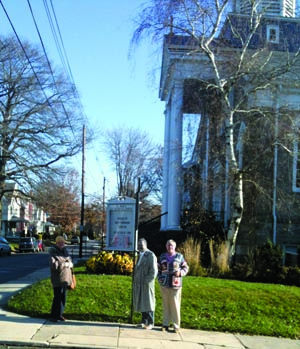Congregational meetings go awry for reasons.
• There are power issues.
• People feel that their interests are not being considered
• Communities have a sense that outside forces or hidden agendas are manipulating the outcome.
Conversely, meetings go well when people feel that what they have to say matters.
Meetings are necessary and most constitutions require them. But the constitutions do not preclude working on the issues before or after the meetings in talks with individuals with known interests in the outcome. That’s where true leadership can shine, but it requires time and energy.
Too often in church settings, professional leaders or congregational faction leaders want to dictate the outcome and use “meetings” to force their way. Voting becomes a weapon. The best organized is likely to win with voters who haven’t been seen in church for years suddenly populating the pews, prepared to raise their hands before leaving, perhaps to never return until their vote is needed again. Then the quorum and membership rules are dusted off and one issue becomes dozens of issues.
There are problems in calling for votes on sensitive matters prematurely. The outcome creates “winners” and “losers” and is rarely constructive. The ultimate goal is not to win but to find a solution that will move ministry forward, hopefully without losing a third of your members.
Outside moderators can be a disaster. They can arrive with the denomination’s interests as their agenda. At one such meeting the denominationally appointed moderator announced that the very issues the people desperately needed to address were not open to discussion. He then proceeded to dictate to the assembled congregation what they should do.
Attempting to side-step controversy is a terrible idea.
There are two (at least) alternatives for calling for “the vote” — neither of them without challenges.
Compromise
Compromises are solutions only if each side gains something they want and loses something they want. Too often compromises are proposed in a series of meetings that are nothing more than steps toward getting one side to make concessions to the other. After three or four meetings, the prevailing side has everything they want and the losers are left feeling that they have been slowly and methodically fleeced.
Consensus
Asking the group to agree to work toward consensus can be helpful. This assures the minority (who are sometimes right) will be heard. When you begin the discussion by promising that no decision will be made without full approval of the entire body, people who really want their side to prevail will do more than “get out the vote.” They will know they have to work toward achieving their goals with consideration for others. Working toward consensus is a commitment. Used over time on smaller decisions, it can become a healthy habit for a congregation and contentious meetings will be few and very far between.
It also helps to remind people of the ultimate reason for being a Christian community.
On one very challenging day, the disgruntled had gathered and were chafing at the bit for an opportunity to expound. Each side was loaded for bear and it was not difficult to identify the opposing factions. The meeting leader handed out hymnals and asked the group to choose a hymn. One member shouted “Everyone turn to the funeral section.” But then an amazing peace fell on the group. They began discussing their favorite hymns. Eventually the group chose two or three which were all sung a capella.
The atmosphere in the room shifted. They were able to work together to choose hymns and a few minutes later they were able to work together to resolve the serious issues facing the group. The moderator had made it clear that each person mattered and the ultimate goal was the glory of God.
Meetings are important. It is best to do a lot of groundwork before the meeting. Visitation and private talks can calm things down and affirm each member that they are not being railroaded. They can have a say without a public demonstration.
And there is work to be done after the meeting as well. Promises made in reaching a decision must be kept. Any “losers” must be visited and reminded that their views are still important and they can continue as valued contributors.
Yes, it is work — but not more work than healing the wounds of a meeting gone bad.






